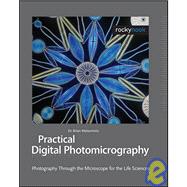
In 1981, Dr. Brian Matsumoto received his Ph.D. in Anatomy and Cell Biology from the University of California at Los Angeles. His research required the development and refinement of techniques for transmission electron microscopy and light microscopy. These tools were used to study the role of actin and microtubules in photoreceptor membrane transport and assembly. In 1992, Dr. Matsumoto was appointed Director of the Integrated Microscopy Facility: a unit administered by the Neuroscience Research Institute and the Department of Molecular, Cellular, and Developmental biology. This facility provides instruction and support for projects that require advanced imaging. In addition, he serves as the instructor for MCDB 220: a graduate level course for digital microscopy at the University of California. Presently he is strengthening the ties between the University and Industry by working with such companies as Olympus of America, Media Cybernetics, Q-Imaging, Jackson ImmunoResearch, Prior Scientific, and Image Content Technology. Together, they have developed a digital imaging course that is open to attendees throughout the United States.
The New copy of this book will include any supplemental materials advertised. Please check the title of the book to determine if it should include any access cards, study guides, lab manuals, CDs, etc.
The Used, Rental and eBook copies of this book are not guaranteed to include any supplemental materials. Typically, only the book itself is included. This is true even if the title states it includes any access cards, study guides, lab manuals, CDs, etc.